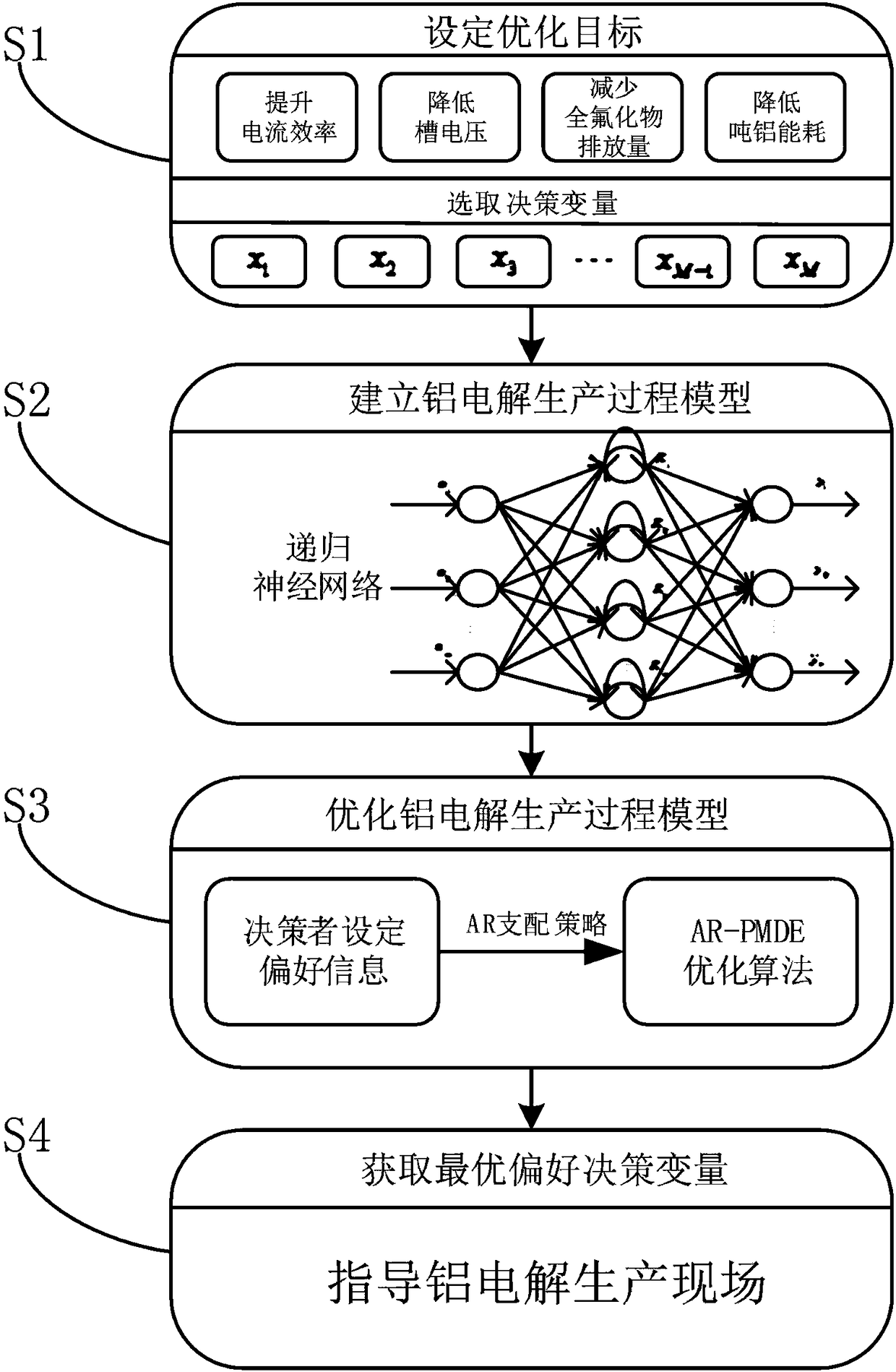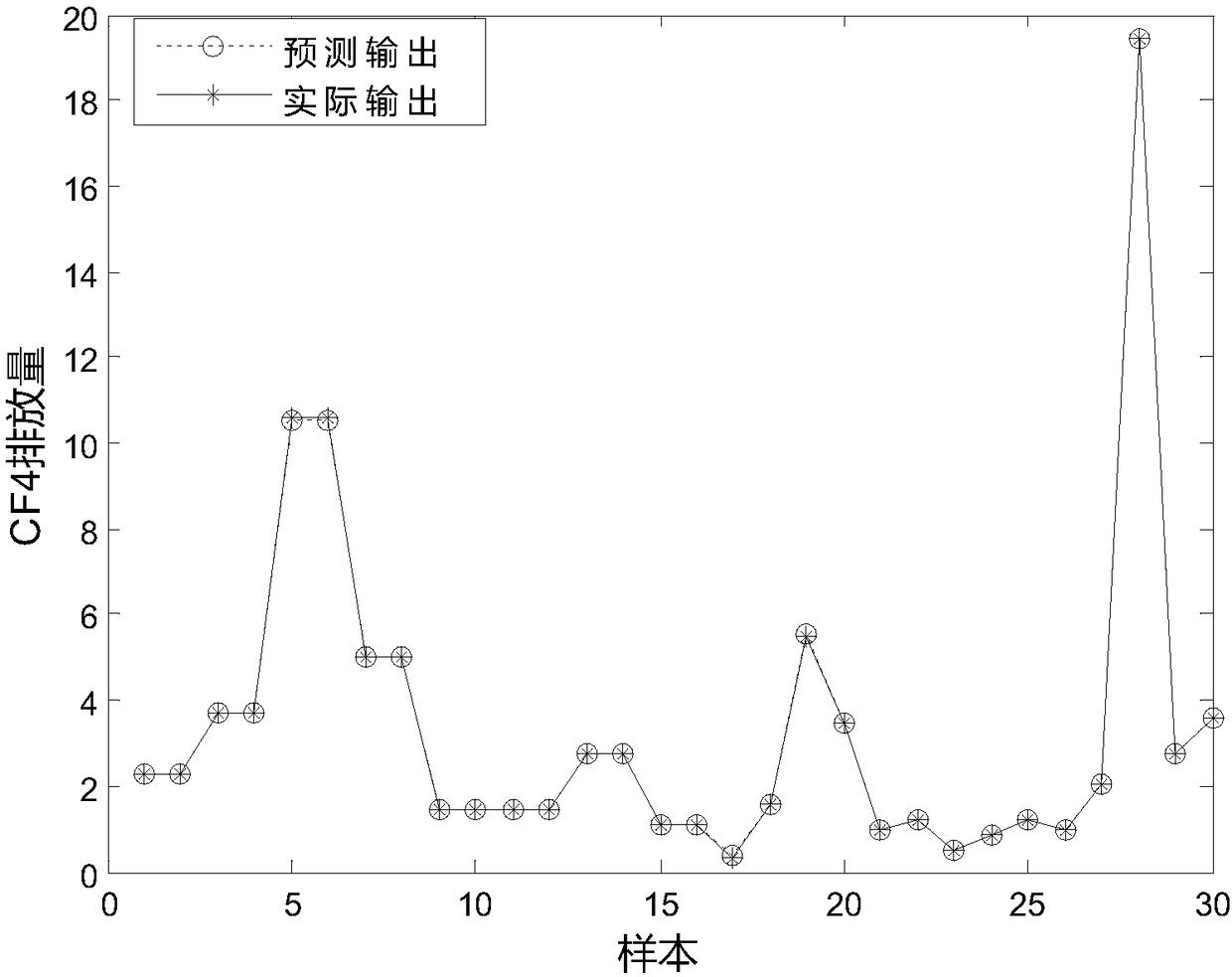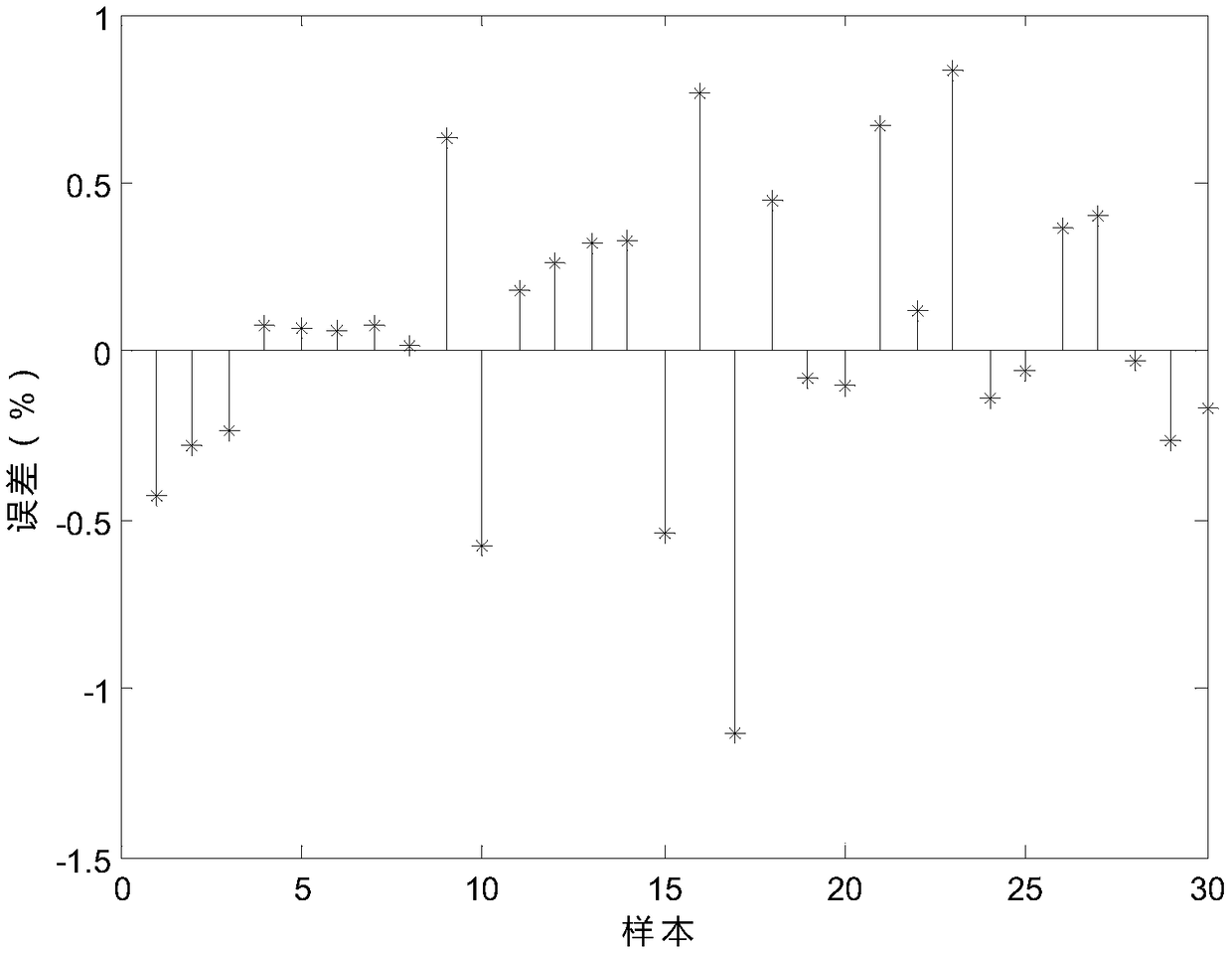Differential evolution aluminum electrolysis multi-objective optimization method based on AR preference information
A technology of multi-objective optimization and preference information, applied in instruments, adaptive control, control/regulation systems, etc., can solve problems such as polluting the environment, high energy consumption, and low efficiency
- Summary
- Abstract
- Description
- Claims
- Application Information
AI Technical Summary
Problems solved by technology
Method used
Image
Examples
Embodiment Construction
[0051] like figure 1 As shown, a differential evolution multi-objective optimization method for aluminum electrolysis based on AR preference information includes the following steps:
[0052] S1: Select the control parameters that affect the current efficiency, cell voltage, perfluoride emissions and energy consumption per ton of aluminum to form a decision variable X=[x 1 ,x 2 ,···,x M ], M is the number of selected control parameters;
[0053] This embodiment is to calculate the original variables that have an impact on current efficiency, cell voltage, perfluoride emissions and energy consumption per ton of aluminum in the aluminum electrolysis production process, and determine the impact on current efficiency, cell voltage, perfluoride emissions and The parameter with the greatest impact on the energy consumption per ton of aluminum is taken as the decision variable X.
[0054] In this embodiment, by making statistics on the measured parameters in the actual industrial...
PUM
 Login to View More
Login to View More Abstract
Description
Claims
Application Information
 Login to View More
Login to View More - R&D
- Intellectual Property
- Life Sciences
- Materials
- Tech Scout
- Unparalleled Data Quality
- Higher Quality Content
- 60% Fewer Hallucinations
Browse by: Latest US Patents, China's latest patents, Technical Efficacy Thesaurus, Application Domain, Technology Topic, Popular Technical Reports.
© 2025 PatSnap. All rights reserved.Legal|Privacy policy|Modern Slavery Act Transparency Statement|Sitemap|About US| Contact US: help@patsnap.com



